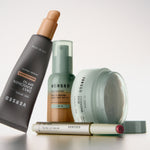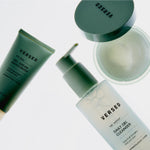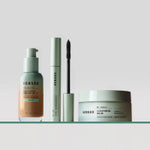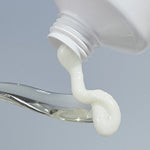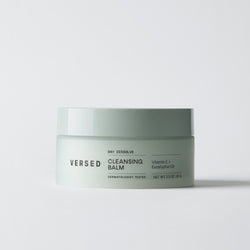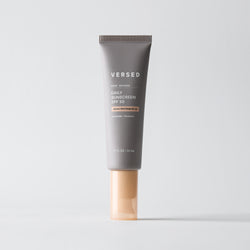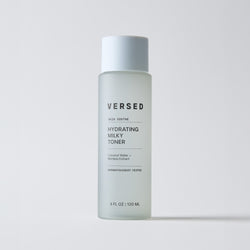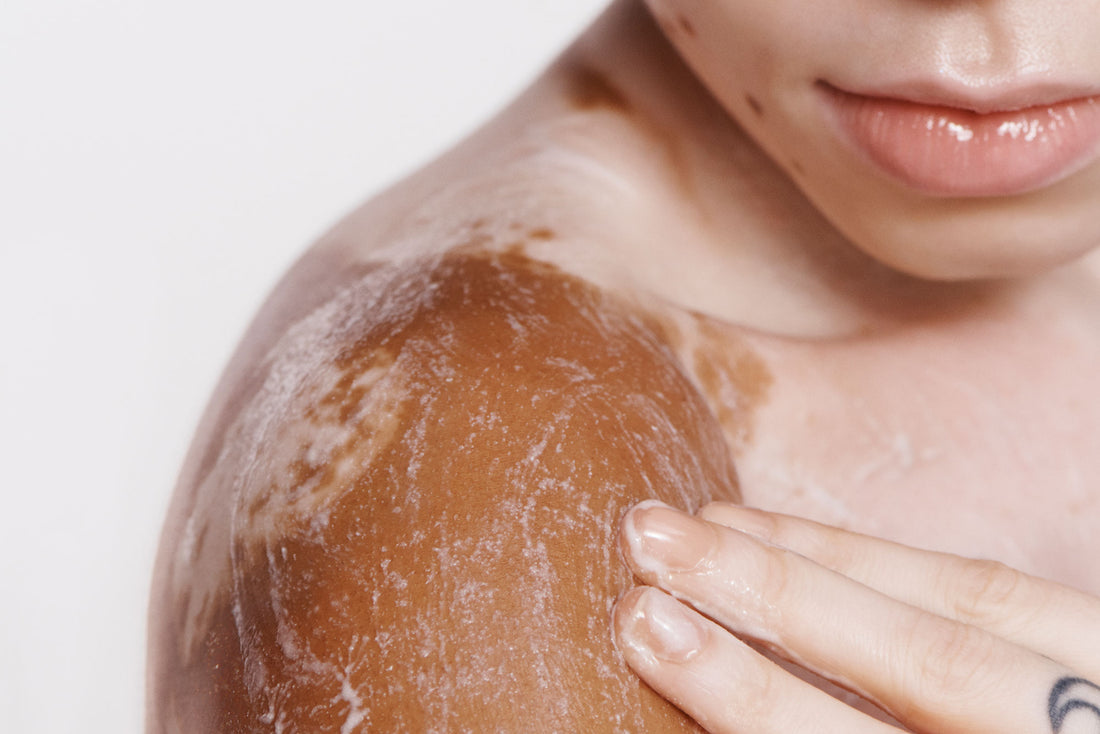Most of us can self-diagnose a pimple or know when our skin is feeling dry, but what about other skin situations that aren’t as easily explained (or treated)? The stats are clear: eczema, psoriasis, rosacea, and other skin conditions are more common than you think, yet more is still to be uncovered when it comes to their causes and cures. While science doesn’t offer much of an explanation yet (other than the fact that these conditions aren’t contagious, but are likely brought about by having an unlucky draw in the gene pool), there are some recommendations when it comes to your skincare choices that may provide some relief.
First and foremost: Always visit your doctor for a proper consultation and diagnosis. They should be your first stop in helping you determine if you have a particular condition and what treatments work best. Afterwards, Board-certified Cosmetic Dermatologist Dr. Shereene Idriss suggests getting to know your skin and its condition better. “Learn to avoid your triggers, invest in appropriate skincare—as they can make all the difference—and be aware that you might be prone to other skin infections (such as with eczema and psoriasis) that might require more immediate attention”. If you struggle with any inflammatory skin conditions, consider switching to a gentle, pH-balanced cleanser that's made for skin sensitivity.
Eczema
Also referred to as atopic dermatitis, eczema is an extremely common condition where patches of skin become inflamed. There are 7 different types, according to the National Eczema Association, but most flare ups are triggered by factors like allergies, weather, fragrance, fabrics, hormones, or stress. Symptoms look different for everyone (and can appear anywhere, even on or around your eyelids), but look out for itchiness, dryness, discoloration (including red, gray, purple, or dark brown patches), scaly or rough skin texture, and swelling.How to Treat It:
Besides doctor-prescribed medications and topical creams, one of the simplest ways to keep eczema flare ups at bay is ample moisturization. Try smoothing on our Keep It Supple Body Oil: Its calendula flower extract has anti-inflammatory properties that have been proven to soothe eczema-related symptoms. If you experience flare ups on your face, the aloe vera in our Moisturizing Gel-Cream can soothe any redness or irritation. Overall, avoid purchasing any skin or body care products that use artificial fragrance, as these could be potentially triggering. Soaking in warm baths, wearing clothing made with 100% cotton, and loading up on anti-inflammatory foods, such as turmeric and leafy veggies, are some other helpful tips.
Psoriasis
Technically categorized as an autoimmune condition, psoriasis occurs when the body produces more skin cells than normal. We know that, generally, the life cycle of a skin cell is around a month (depending on your age), but those with psoriasis have immature skin cells that reach the surface of the skin in just 4-7 days. Instead of shedding off, they build up on the surface of the skin and cause scaly, ‘silvery’ patches that may itch or burn. Psoriasis can appear red, purple, gray, or dark brown, depending on skin tone and, similarly to eczema, there are several different types. Usually, symptoms appear on the knees, elbows, nails, and scalp and can be triggered by weather, infection, skin injury (including sunburn), medication, or stress.How to Treat It:
Creams, ointments, and even light therapy are among some common treatments for psoriasis, but skincare enthusiasts will be especially thrilled to know that retinol can provide some relief as well. Retinol speeds up cellular turnover and encourages those extra skin cells to flake off, which can help reduce psoriasis’ patches. If your derm says it’s a-okay, turn to our Gentle Retinol Serum: It has the same power of traditional retinol without the irritation.
Keratosis Pilaris
You’ve probably heard this condition referred to as ‘chicken skin’, as it causes skin’s texture to feel rather bumpy and uneven. At first glance, these tiny raised bumps may appear to be pimples, but they are actually clogged hair follicles caused by a buildup of the protein keratin. Because of this reason, keratosis pilaris only occurs in areas where hair grows. The causes of these little bumps are unknown, but it’s particularly common in children, dry skin types, or those with other skin conditions, like eczema.
How to Treat It:The key to removing the buildup that causes keratosis pilaris? Exfoliation, exfoliation, exfoliation. AHAs, like the lactic and glycolic acid found in our Weekend Glow Daily Brightening Solution, sloughs off dead skin cells, unclogs pores, and (bonus!) brightens skin. Got keratosis pilaris on the body? Exfoliate away chicken skin on legs, arms, and bum using our Buff It Out AHA Exfoliating Body Scrub. Don’t forget to moisturize afterwards in order to keep skin smooth and supple.
Rosacea
An inflammatory skin condition, rosacea results in consistent ‘blushing’ in the face and is sometimes accompanied by acne, dryness, warmth in face, discoloration (typically flushes of red, purple, gray, or dark brown), or swelling. If you have rosacea, you’ve probably been told to stay away from spicy foods or caffeine. Some other common triggers include alcohol, exercise, weather, and medication.How to Treat It:
Changing up your diet, taking good care of your skin post-workout, and swapping out hot drinks for iced ones can soothe rosacea symptoms. But most importantly, don’t forget to apply ample SPF (that goes for everyone, not just those that have rosacea). It doesn’t hurt to don a wide brimmed hat and stay in the shade, either, since UV rays are a trigger for flare-ups. Mineral formulas that contain zinc oxide, like our Daily Mineral Sunscreen Broad Spectrum SPF 35, are your best bet when it comes to this skin condition as they block the sun’s rays at the surface and pose less risk of irritation compared to chemical sunscreens.
Sometimes, pregnancy can trigger new skin conditions we’ve never dealt with before too. Read more about how your skin can change when pregnant and how to deal.
